PREVIOUS
Mettur Dam Dispute
July 15 , 2023
898 days
5361
0
(இதன் தமிழ் வடிவத்திற்கு இங்கே சொடுக்கவும்)
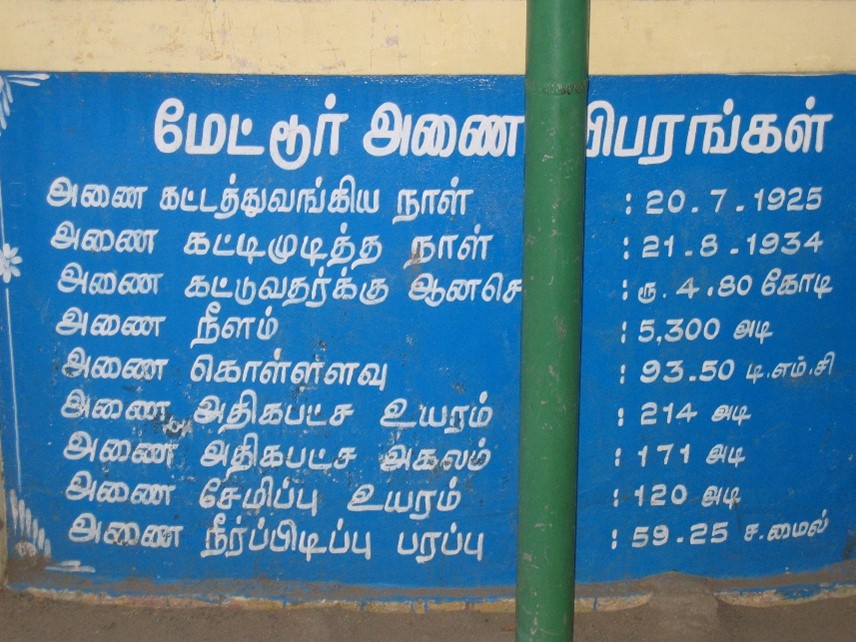
- The year 1924, marked a vital point in the dispute between Tamil Nadu and Karnataka.
- The Madras and Mysore governments signed the agreement on February 18 that year.
- It covered construction of Krishnaraja Sagar and Mettur dams.
- This year will also mark the centenary of a historical event concerning the river.
- In the age-old dispute between Tamil Nadu and Karnataka over the sharing of Cauvery water, the 1924 agreement, signed by the predecessors of the two southern States in February that year, is into the 100th year.
- The final order of the Cauvery Water Disputes Tribunal, of February 2007, has superseded the agreement.
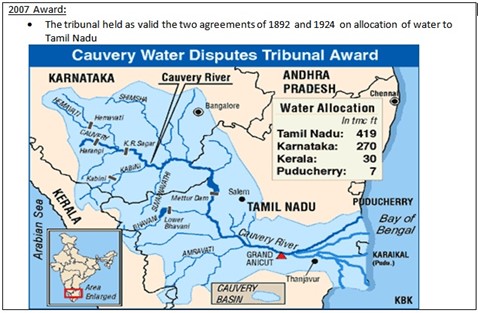
The genesis
- The genesis of the dam dates to the proposal mooted in 1834 by Arthur Cotton (1803-99).
- He was a celebrated British engineer credited with having implemented irrigation projects that helped to avert famines and stimulated the economy of south India.
- Cotton had thought of damming the Cauvery to improve irrigation in the composite Thanjavur region.
- Later, many engineers pursued the idea.
- At one point of time, it appeared that the Bhavani, a tributary of the Cauvery, and not the main river, would be selected first.
- But there was no consensus among water experts.
- In 1901, the then Inspector-General of Irrigation, Thomas Higham, after perusing reports on the proposed Bhavani and Cauvery reservoirs, preferred the proposal of having a dam across the Cauvery.
- Nine years later, Col. W.M. Ellis, chosen for drawing Mettur Project submitted his report.
- Analysing his proposal, the Central Board of Irrigation and Power (CBIP) published a report on 'History of Cauvery Mettur Project' in 1987.
- It points out that Ellis, while selecting the dam site, "was able to secure" all the conditions: that were essential for a dam of the size proposed, whereas "the sites proposed by earlier investigators all lacked one or more of the essentials.
- This publication was based on a document authored by C.G. Barber in 1936 and revised by A. Mohana Krishnan in the 1980s.
- When the Ellis scheme was under consideration of the British authorities, the Cauvery dispute assumed serious proportions between the then Madras and Mysore understanding and signed the agreement on February 18, 1924.
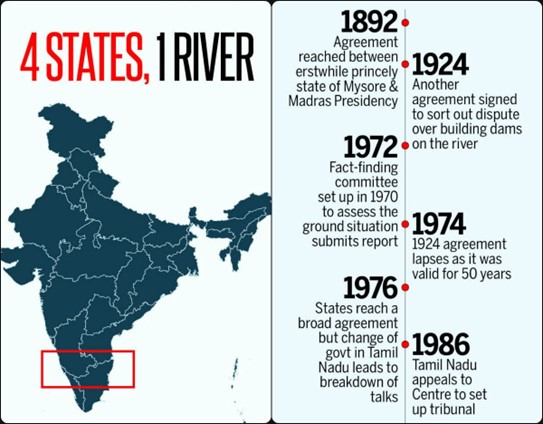
- The pact covered, among others, the construction of Krishnaraja Sagar dam (in Karnataka) and Mettur dam (in Tamil Nadu).
- It took a year for the government in the U.K. to clear the estimate for the project, and the cost was fixed at 76.12 crore, about 21 crores more than the Ellis's scheme of 1910, records the CBIP publication.
- On July 20, 1925, the then Governor, Viscount Goschen, formally inaugurated the work.
- While recounting the history of the dam project, he referred to the role played by C.P. Ramaswamy Aiyar (1879-1966) in getting the 1924 agreement signed and the dam project commenced.
- Aiyar was Law Member in the Executive Council handling subjects including irrigation and electricity.
- In a sense, the delay in the commencement of the Mettur project was a blessing in disguise: on July 26, 1924, the Cauvery saw a flood of 4.56 lakh cubic feet per second (cusecs), whereas Ellis had provided for 2.5 lakh cusecs.
- The previous recorded was 2.07 lakh cusecs in 1896.
- Now, the dam, through spillways, can discharge 4.41 lakh cusecs.
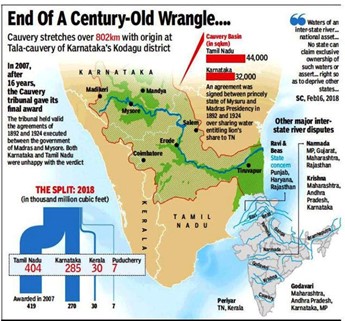
'A foremost expert'
- The construction of the dam took nine years and the dam came into use on August 21, 1934.
- C.T. Mullings (who served as Consulting Chief Engineer and Engineer in Chief) was the foremost expert who had evolved the scheme and pointed out that his work had been recognised by the conferment of knighthood.
- As part of the dam project, the Grand Anicut Canal System was created to serve 3.01 lakh acres of new area.
- Two more reservoirs-Bhavanisagar and Amaravathy-were built across the tributaries of the Cauvery in 1953 and 1957 respectively.
- There have been several other developments the important benefits of the dam are stabilising irrigation, ensuring livelihood for lakhs of farmers and landless workers and contributing to food security.
- This is evident from the fact that paddy is grown in the Cauvery delta on at least 15 lakh acres through three cultivation seasons - Kuruvai, Samba and Thaladi - if the data since 1996 are any indication.
- Needless to say, Samba is the main season with a minimum of 10 lakh acres.

- The year 2022 saw the highest-ever quantum of excess water being released from the Mettur dam since it was built in 1934.
- The amount of surplus water let out was over 4.7 times the dam's capacity.
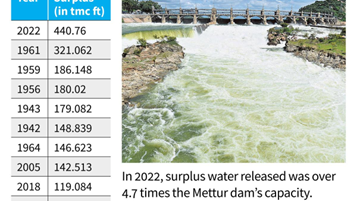
- After considering the figure for 2022, the total surplus quantum in the last 88 years was about 3,614 thousand million cubic feet (tmcft), according to a publication authored by R. Subramanian, former Superintending Engineer of the Water Resources Department.
- Published by the Tamil Nadu PWD Senior Engineers Association, the publication, 'Construction of Mettur Dam Systems-An illustrative treatise, traces the history of the project.
- It talks of how the July 1924 floods in the Cauvery, amounting to 4.56 lakh cubic feet per second (cusecs), shifted the dam site from the original location.
- This publication contains the text of the 1892 and 1924 agreements, the Cauvery Water Disputes Tribunal's interim and final awards and excerpts from the Supreme Court's 2018 judgment.
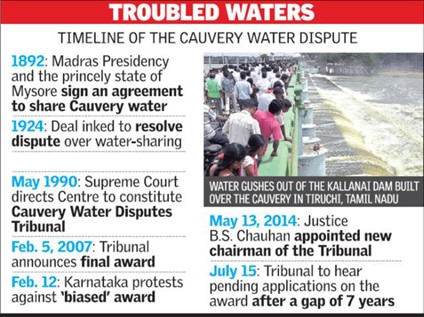
Leave a Reply
Your Comment is awaiting moderation.


